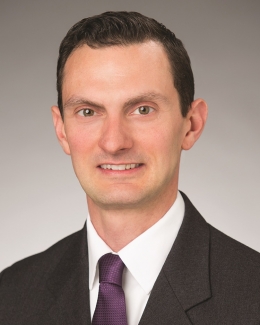Photo credit: Getty/KatarzynaBialasiewicz
Unreliable or inaccessible transportation has emerged as a significant patient care issue, one that hospitals are attempting to resolve through innovative partnerships with 21st-century ride-hailing businesses such as Uber and Lyft.
However, as examined in this FierceHealthPayer:AntiFraud exclusive report, those partnerships are accompanied by a number of legal questions, illuminating a “gray area” of legal oversight concerning patient transportation agreements, safe harbors and the potential for anti-kickback violations or beneficiary inducements.
Undoubtedly, patient transportation is a serious concern for patients, healthcare providers, and insurers.
For instance, research published in 2013 reviewed 61 different studies addressing transportation barriers in healthcare and found that overall, poorer patients were more likely to encounter transportation barriers, and those with access to a vehicle were much less likely to miss appointments.
RELATED: To improve population health, give patients a Lyft
In 25 studies, as much as 51 percent of patients reported that transportation was a barrier, which can disrupt treatment, particularly for those with chronic diseases. Meanwhile, missed doctor appointments can lead to more expensive inpatient hospital stays and impede effective disease management.
In an effort to break down some of these transportation barriers, hospitals are partnering with mobile app-based ride-hailing services.
In March, MedStar Health--which has 10 hospitals, ambulatory care and urgent care centers throughout Maryland and the District of Columbia--announced a partnership with Uber to assist patients getting to and from appointments. The following month, Hackensack University Medical Center, a 775-bed teaching hospital in New Jersey, announced a partnership with Uber in which the hospital would “assist in supporting the cost of Uber trips home from the medical center for those in need.”
Lyft has also partnered with National Medtrans Network in New York City to provide non-emergency transportation to seniors.
Payers, provders use @lyft, @Uber to get members to appointments, improve #pophealth https://t.co/MPVxWFAKhx #hcldr pic.twitter.com/nibIRvBdEA
— FierceHealthPayer (@HealthPayer) August 16, 2016
While these partnerships may offer a needed benefit to patients with limited transportation options, legal experts say the arrangements also raise concerns that ride-hailing agreements could violate the Anti-Kickback Statute or qualify as a beneficiary inducement, depending on the circumstances.

“Free transportation can be viewed in two lenses,” Michael Malone (pictured right), a shareholder at Greenberg Traurig LLP in Dallas, says.
“One is you’re trying to steer patients, or you’re trying to draw patients from outside of your established catchment area. You can use it to overutilize, or you can offer free transportation to people that don’t need to be in your facility, but it generates volume and unnecessary medical services. It’s subject to being abused.”
The key to these arrangements is whether or not the services are paid for by the hospital or healthcare provider, says Tony Maida, a partner at McDermott Will & Emory LLP in New York.
“If you’re providing something of value to a federal program beneficiary, that could be viewed as something that would either make them more likely to choose the hospital over another, or be viewed as an improper inducement,” he says.
A “gray zone” of enforcement
Typically when questions about kickbacks arise, hospital providers turn to the Health and Human Services Department's Office of Inspector General (OIG) for answers. Unfortunately, in this instance, the agency’s guidance is opaque.
#Ridesharing can improve #healthcare access, but it's also a legal grey area for #fraud. https://t.co/lSOZSjz6dG #fierceExclusive
— FierceHealthPayer (@HealthPayer) September 1, 2016
In 2014, OIG released a proposed rule aimed at protecting ride-hailing programs from anti-kickback violations by creating a safe harbor for “free or discounted local transportation services that meet specific criteria.”
Under the proposed rule, transportation would only be provided to existing patients and the safe harbor would not cover entities that supply “healthcare items,” such as DME manufacturers or pharmaceutical companies.
OIG also sought comments on whether specific providers susceptible to fraud, such as home health providers, should be excluded from the safe harbor, and raised concerns about transportation arrangements that were paid on a per-beneficiary basis.
However, since OIG’s proposed rule has not been finalized, the true impact remains unclear. Still, past advisory opinions indicate the agency views transportation arrangements favorably.
In 2011, OIG approved a “financial need-based policy of providing transportation assistance” for a pediatric charity hospital, as well as an arrangement in which a hospital provided local transportation between physician offices and the hospital for patients that could not transport themselves.
Last year, OIG signed off on an arrangement that provided free van shuttle service between certain medical facilities within a system, with designated “drop-off and pick-up” locations at the center of town.

“You’re in this gray zone where there isn’t really a lot of guidance at the moment about where the lines are,” says Maida (pictured right), who previously worked in the Office of Counsel to the OIG.
“OIG issued the proposed safe harbor, which is helpful, but it’s not final yet so you don’t really know where OIG is going to land.”
When asked how OIG views ride-hailing agreements with companies like Lyft or Uber, OIG spokesperson Don White says that the agency’s perspective depends on the circumstances of the arrangement.
“The OIG would be pleased to accept a request for an advisory opinion to outline any proposed arrangement from a transportation provider who was concerned about the anti-kickback rules,” he says.
Potential pitfalls
Although current ride-hailing agreements vary widely, experts say there are several important considerations within any partnership, including:
- No payment, no problem: If a patient is paying for the ride, it’s no different than hailing a cab. Even if the provider is assisting with the coordination of that transportation, Maida says it’s unlikely the arrangement would be seen as an inducement if there is no financial support.
- Being selective: Transportation services that are targeted to a specific patient population, such as elderly patients or patients without access to transportation, may be viewed more favorably than general transportation arrangements that could be seen as a way to “gin up business,” according to Malone. Paradoxically, that type of arrangement could be problematic if the provider is only offering transportation to patients with a high dollar value condition--even though that population may have the highest clinical need.
- Financial need: A financial need test may be one of the most important factors in any agreement, Maida says. Offering transportation to patients who meet a specific financial need criteria, require frequent appointments and don’t have access to transportation would balance the risk of potential inducements.
- Marketing concerns: Targeted marketing and outreach, as opposed to a widespread campaign, will limit concerns that the partnership is an effort to boost volume.
- Geographical limitations: Transportation agreements that reach beyond a provider’s catchment area are likely to raise eyebrows, Malone says. Services should be limited to patients in the community that would already be the hospital’s services.
- Capping the value of services: Higher transportation costs means increased liability. The OIG has previously stated that gifts or services of less than $10 individually or $50 annually are not considered beneficiary inducements. Although it may be difficult to keep transportation costs below those figures, Malone says it’s important to demonstrate some effort to manage costs. Agreements that pay for services on a per-beneficiary basis raise additional concerns.
- Using luxury vehicles: The use of luxury vehicles, like a limousine, could be considered and inducement--although Maida notes that it’s still unclear exactly how OIG defines luxury. “You can get a Lincoln Navigator pretty easily now,” he says.
New ride-hailing agreements announced within the last year vary considerably in terms of structure and cost.
For example, as part of its partnership with Uber, Hackensack provides subsidies for trips to the patient’s home, but not to the hospital, according to an Uber spokesperson.
However, Malone says subsidized trips home could still be considered an inducement if the agreement does not meet the above considerations surrounding luxury vehicles, financial need, geographical limitations and patient selection.
Nothing simple in #healthcare. Giving #Uber or #Lyft could trip #fraud laws. https://t.co/BJy3dZHmZk pic.twitter.com/ig9Rs0xLdL
— Matt Fisher (@Matt_R_Fisher) August 31, 2016
Neither HackensackUMC nor MedStar responded to questions regarding the specifics of each provider's partnership with Uber. Lyft declined to answer questions about its transportation partnerships with healthcare providers or any anti-kickback considerations within those agreements.
Given the well-publicized difficulties surrounding patient transportation, Maida predicted the healthcare industry will see some form of safe harbor for local transportation. He also says that future rules must strike a delicate balance, since the use of transportation as an inducement is not unprecedented.
Last year, nine Jacksonville hospitals and an ambulance company paid $7.5 million to settle allegations they improperly billed Medicare for non-emergency rides in an effort to boost ER throughput.
Although OIG doesn’t want to limit access to care, the agency is also aware of the ways in which transportation can be used as an inducement to boost volume.
“They are trying to weigh those two things: [Preventing] a Wild West where people can do anything versus ensuring that beneficiaries legitimately get access to the care they need,” Maida says.
Exclusive: Fraud lurks behind new patient transport arrangements https://t.co/nFm3g02Ryn
— Bob Provenzano, MD (@DrBobPro) August 31, 2016